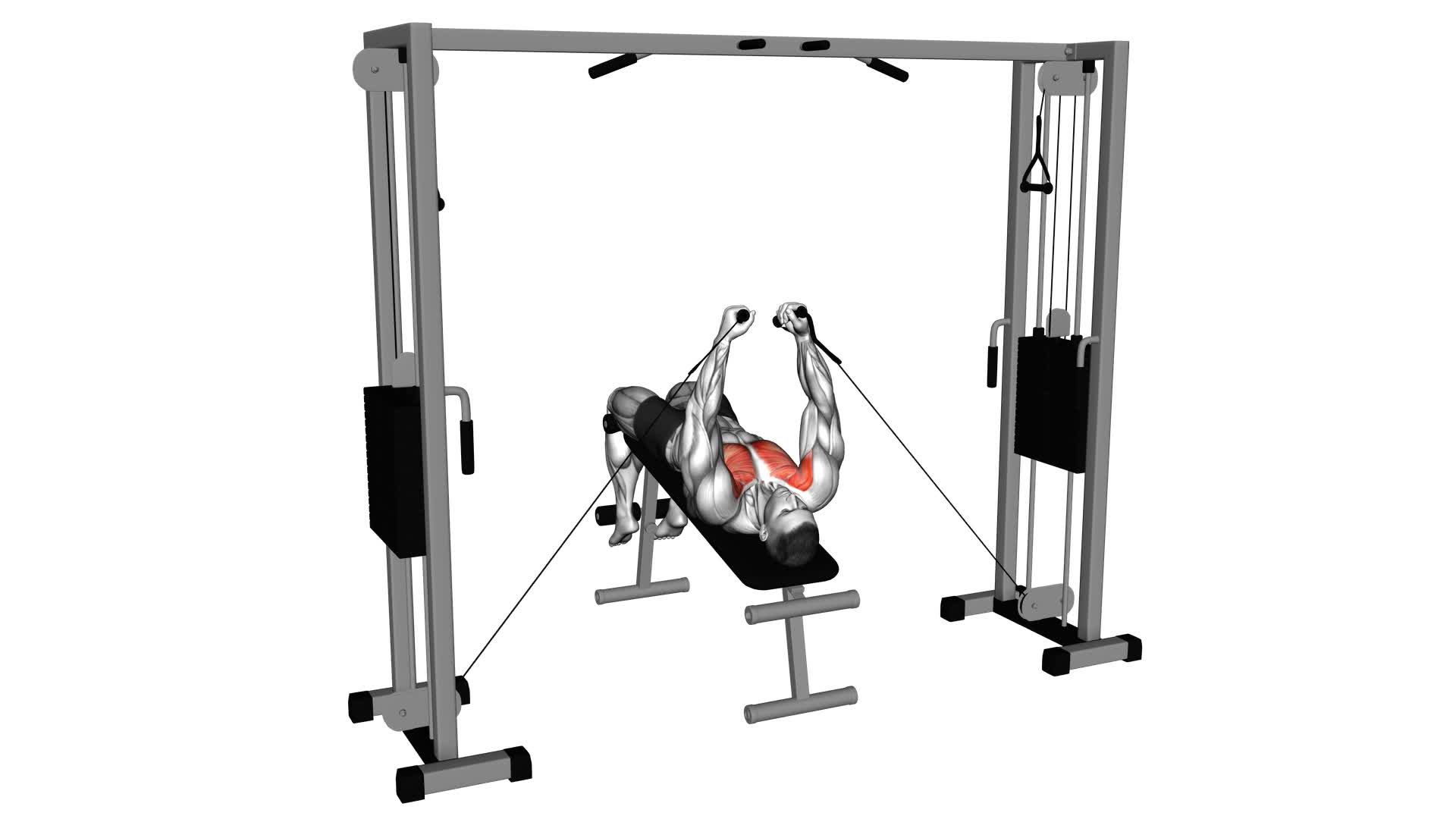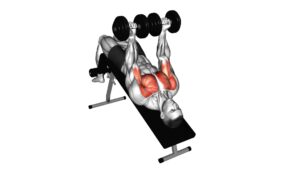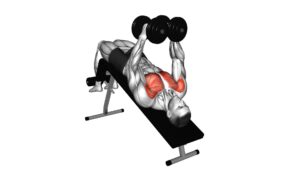Cable Decline Fly – Video Exercise Guide & Tips

Are you looking for a new exercise to target your chest muscles? Look no further than the cable decline fly!
Watch This Exercise Video
In this video exercise guide, we'll show you the proper form and technique to maximize your results.
With variations and modifications to suit your fitness level, you can easily customize this exercise to challenge yourself.
Don't miss out on the benefits of the cable decline fly – let's get started!
Key Takeaways
- Proper form and technique are essential for activating the chest muscles and preventing injuries.
- The use of a cable machine and a decline bench is required for performing cable decline fly exercises.
- Variations of the exercise, such as single-arm and reverse grip cable decline fly, can target different muscle groups.
- Listening to your body, using safety measures, and incorporating rest and recovery are important for overall fitness and preventing injuries.
Benefits of the Cable Decline Fly
The cable decline fly offers numerous benefits for your chest and upper body strength. This exercise is highly effective in activating the muscles in your chest, particularly the pectoralis major and minor. By using the cable machine, you're able to maintain constant tension on the muscles throughout the entire range of motion, resulting in maximum muscle activation.
One of the key advantages of the cable decline fly is its ability to prevent injuries. Unlike traditional dumbbell fly exercises, which can put strain on your shoulders and risk potential injury, the cable machine provides a more controlled and stable movement. This reduces the risk of overstretching or hyperextending your shoulders, ensuring a safer workout.
In addition to injury prevention, the cable decline fly also helps to improve your overall upper body strength. By targeting your chest muscles, this exercise not only enhances your chest definition but also strengthens your shoulders and arms. The continuous tension provided by the cable machine also helps to develop stability and control in your upper body, improving your overall functional strength.
Now that you understand the benefits of the cable decline fly, let's move on to the equipment and setup for the exercise.
Equipment and Setup for the Exercise
To properly perform the cable decline fly, you'll need a cable machine and a decline bench. The cable machine is essential for providing the resistance needed to work your chest muscles effectively. Make sure the machine is set at a height that allows you to reach the handles comfortably when you're lying on the decline bench. Adjust the weight stack according to your strength level.
The decline bench should be set at an angle of around 30 to 45 degrees. This angle will target your lower chest muscles more effectively. Position yourself on the bench with your feet securely hooked under the provided foot pads. This will help stabilize your body during the exercise. Make sure your head, shoulders, and lower back are fully supported on the bench.
Your arms should be extended straight out in front of you, holding the handles of the cable machine. This is your starting position. By ensuring proper equipment setup and body positioning, you can perform the cable decline fly with optimal form and get the most out of your workout.
Proper Form and Technique
Maintain a controlled and fluid motion throughout the cable decline fly exercise. Proper form and technique are crucial for maximizing the benefits and avoiding common mistakes. Here are some key points to keep in mind:
- Body Positioning:
- Lie on a decline bench with your feet secured and your back flat against the bench.
- Keep your arms slightly bent and elbows slightly below shoulder level.
- Engage your core and maintain a neutral spine throughout the movement.
- Range of Motion:
- Start with your arms extended out to the sides, parallel to the floor.
- Slowly bring your hands together in front of your chest, maintaining a slight bend in your elbows.
- Focus on squeezing your chest muscles as you bring your hands together.
- Avoid swinging or using momentum to complete the exercise.
By following these guidelines, you can ensure that you're performing the cable decline fly with proper form and technique. This won't only help you target your chest muscles effectively but also reduce the risk of injury.
Now let's move on to exploring some variations and modifications of this exercise.
Variations and Modifications
Continue maximizing the benefits and avoiding common mistakes during the cable decline fly exercise by exploring different variations and modifications.
By incorporating exercise progressions and targeting different muscle groups, you can keep your workouts fresh and continue challenging your body.
One variation of the cable decline fly is the single-arm cable decline fly. Instead of using both arms simultaneously, you can focus on one arm at a time. This variation not only helps to isolate and strengthen each side of your chest individually, but it also improves stability and balance.
Another variation is the incline cable decline fly. By adjusting the bench to an incline position, you can target the upper chest muscles more effectively. This variation adds an extra challenge and helps to develop a well-rounded chest.
To target different muscle groups, you can also try the reverse grip cable decline fly. By using an underhand grip, you shift the emphasis to your lower chest and triceps. This variation is great for those looking to add more definition and strength to these areas.
By incorporating these variations and modifications into your cable decline fly routine, you can continue to challenge your muscles and avoid plateaus.
Now, let's move on to some tips for maximizing results and avoiding common mistakes.
Tips for Maximizing Results and Avoiding Common Mistakes
Now let's focus on how you can maximize your results and avoid common mistakes during the cable decline fly exercise.
To get the most out of this exercise and ensure you're on the right track, here are some tips to keep in mind:
- Common Mistakes to Avoid:
- Avoid using excessive weight: Using too much weight can lead to poor form and increase the risk of injury. It's important to maintain control throughout the movement.
- Don't rush the exercise: Performing the cable decline fly too quickly can compromise the effectiveness of the exercise. Focus on a slow and controlled movement to engage the targeted muscles fully.
- How to Progress in the Exercise:
- Increase weight gradually: As your strength improves, gradually increase the weight to continue challenging your muscles. This will help you progress and see better results over time.
- Experiment with different cable positions: Altering the angle of the cables can target different areas of your chest. Try adjusting the cables to find the position that works best for you and helps you feel the exercise in the desired muscles.
By avoiding common mistakes and progressing in the cable decline fly exercise, you'll be able to maximize your results and achieve your fitness goals more effectively.
Remember to always prioritize proper form and listen to your body to ensure a safe and efficient workout.
Frequently Asked Questions
How Many Sets and Reps Should I Do for the Cable Decline Fly Exercise?
For the cable decline fly exercise, you may be wondering how many sets and reps you should do. Well, it depends on your fitness level and goals.
Generally, it's recommended to start with 3-4 sets of 8-12 reps. This will help you build strength and muscle endurance.
However, you can always adjust the number of sets and reps to challenge yourself or try variations of the cable decline fly to target different muscles.
Can I Perform the Cable Decline Fly Exercise With Dumbbells Instead of Using a Cable Machine?
Yes, you can definitely perform the cable decline fly exercise with dumbbells instead of using a cable machine. Using dumbbells can provide you with several benefits for this exercise.
It allows for a greater range of motion, engages more stabilizer muscles, and can help improve overall muscle balance.
By using dumbbells, you can still effectively target your chest muscles and get a great workout.
Is the Cable Decline Fly Exercise Suitable for Beginners or Only for Advanced Lifters?
The cable decline fly exercise can be suitable for beginners as well as advanced lifters. It's a great exercise for targeting the chest muscles and building strength.
If you're a beginner, you can start with lighter weights and focus on proper form. As you progress, you can gradually increase the resistance. Cable machines offer the benefit of constant tension throughout the movement, which can help in building muscle and improving stability.
Can the Cable Decline Fly Exercise Help in Improving Shoulder Stability and Posture?
The cable decline fly exercise is a great way to improve your shoulder stability and posture. By working the muscles in your shoulders and upper back, this exercise can help strengthen the muscles that support your shoulder joints, leading to greater stability.
Additionally, the cable decline fly can also help improve your posture by targeting the muscles responsible for maintaining proper alignment.
Are There Any Alternative Exercises That Can Be Done in Conjunction With the Cable Decline Fly to Target the Same Muscle Groups?
Looking to target the same muscle groups as the cable decline fly? There are plenty of alternative exercises you can try!
By incorporating exercises like dumbbell flys, push-ups, or chest presses, you can engage similar muscle groups and work towards your fitness goals.
These exercises provide a great way to challenge your muscles and improve strength and stability.
Stay motivated and keep mixing up your routine to see the best results!
Conclusion
Incorporating the cable decline fly into your workout routine can provide numerous benefits, including targeting the lower chest muscles and improving overall upper body strength.
By following proper form and technique, utilizing variations and modifications, and keeping these helpful tips in mind, you can maximize your results and avoid common mistakes.
So, why wait? Add the cable decline fly to your exercise repertoire and start seeing the gains you've been working towards!

Author
Years ago, the spark of my life’s passion ignited in my mind the moment I stepped into the local gym for the first time. The inaugural bead of perspiration, the initial endeavor, the very first surge of endorphins, and a sense of pride that washed over me post-workout marked the beginning of my deep-seated interest in strength sports, fitness, and sports nutrition. This very curiosity blossomed rapidly into a profound fascination, propelling me to earn a Master’s degree in Physical Education from the Academy of Physical Education in Krakow, followed by a Sports Manager diploma from the Jagiellonian University. My journey of growth led me to gain more specialized qualifications, such as being a certified personal trainer with a focus on sports dietetics, a lifeguard, and an instructor for wellness and corrective gymnastics. Theoretical knowledge paired seamlessly with practical experience, reinforcing my belief that the transformation of individuals under my guidance was also a reflection of my personal growth. This belief holds true even today. Each day, I strive to push the boundaries and explore new realms. These realms gently elevate me to greater heights. The unique combination of passion for my field and the continuous quest for growth fuels my drive to break new ground.







